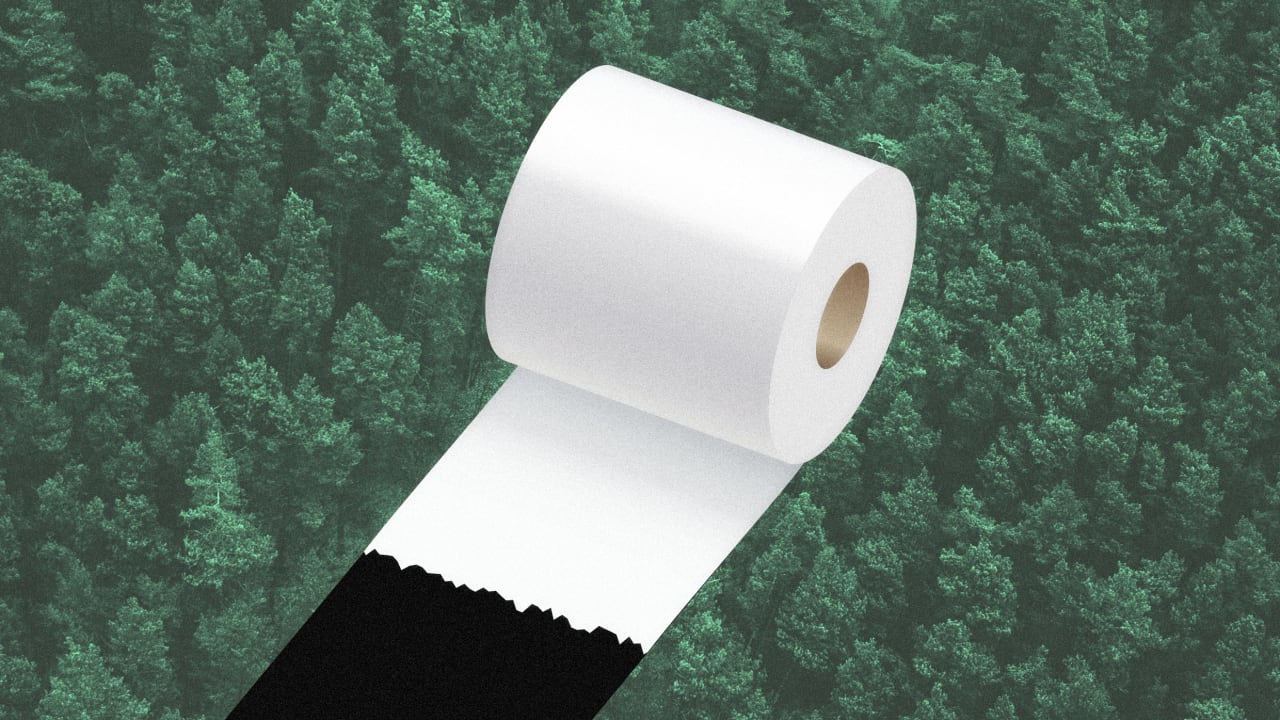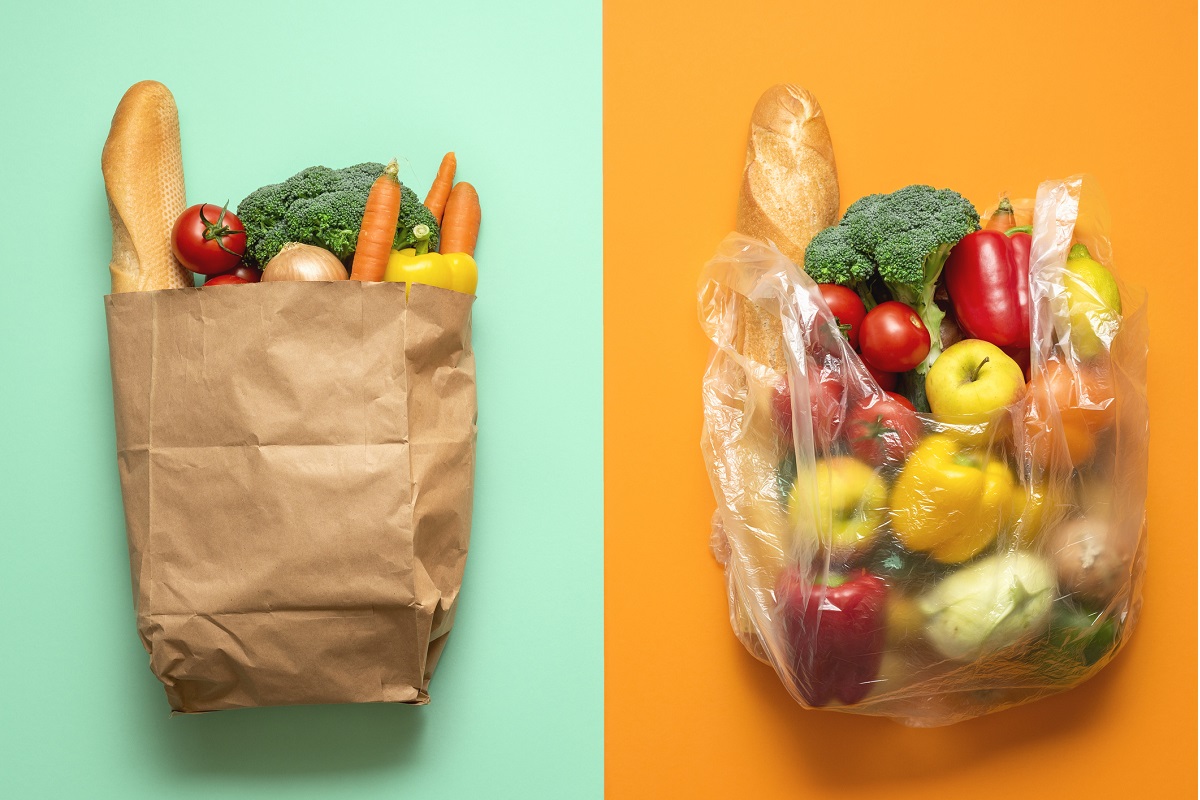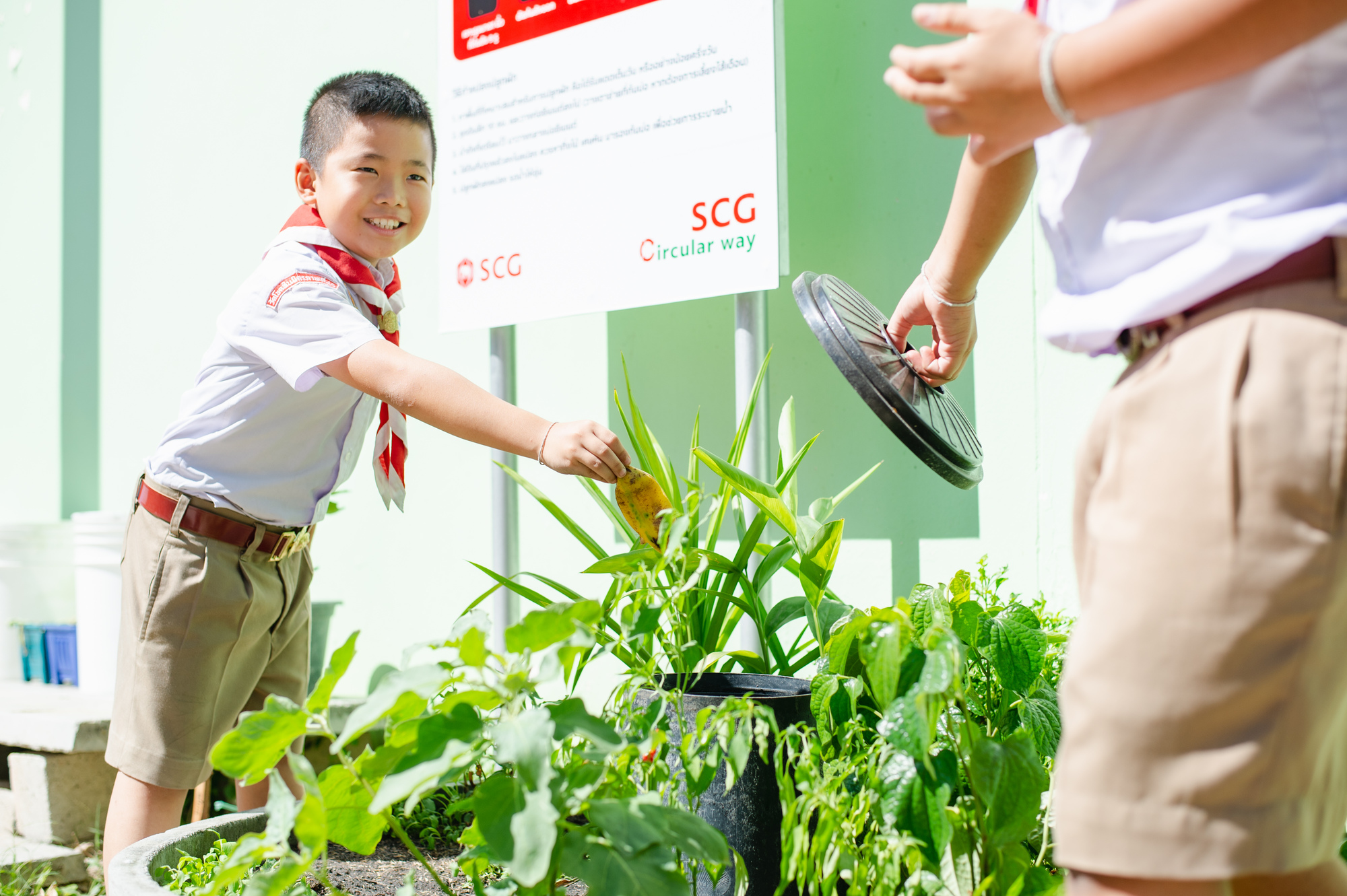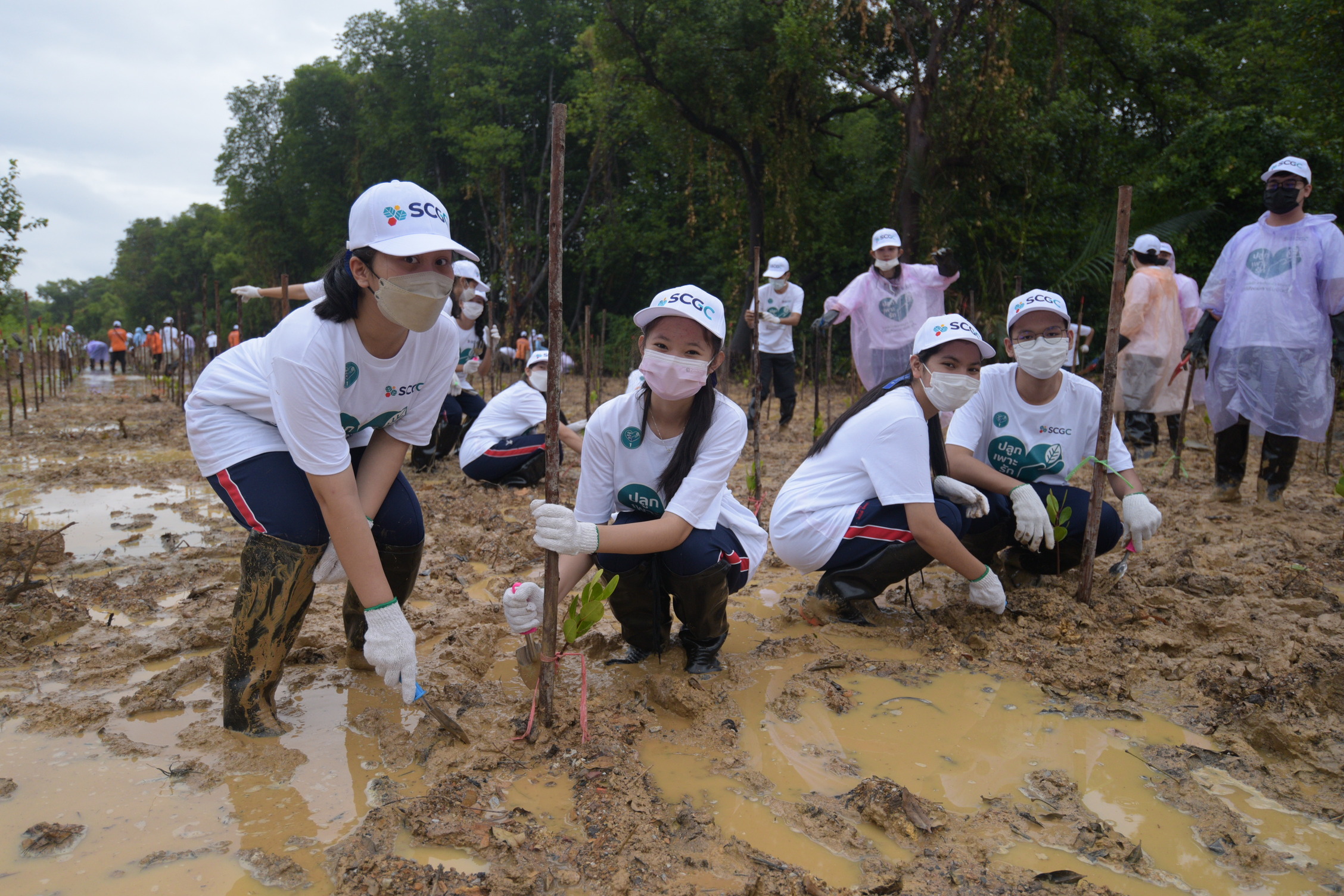Although most companies in the value chain are committed to recycling and reusing plastics in line with the principles of the Circular Economy, and the government sector is driving policies and implementing frameworks for effective plastic management, only 9% of plastics are recycled from the total 8,300 million tons of new plastics produced worldwide. Since the COVID-19 pandemic emerged in 2020, it has been reported that single-use plastic waste (including bags, bottles, straws, and other items discarded after just one use) has reached a staggering 139 million tons—nearly double the amount reported in 2019.
This is why some brands are bidding farewell to plastics and advertising through various environmental campaigns that use alternative materials instead. An interesting example is "eco-friendly paper packaging." However, no matter what materials we use, we should study and understand the advantages and disadvantages, the life cycle throughout the value chain, and the environmental impact and ways to prevent it. In this article, SCGC invites everyone to find the answers together.
----------------------------------------------------------------------------------------------------------------------------------------
MORE STORIES FROM SCGC:
✓ Update! 2022 Sustainability Report
✓ Reshaping Business and Investing for Global Positive Impact
✓ SCGC and Mission to Restore Forests and Marine Life
----------------------------------------------------------------------------------------------------------------------------------------
From Material Science Heroes to Environmental Challenges
From the celluloid invented by John Wesley Hyatt in 1869, an innovative material created as a substitute for elephant ivory, to "Bakelite," the revolutionary invention in the field of material science of Leo Hendrick Baekeland that became the first synthetic polymer made by polymerizing phenol with formaldehyde, this development later paved the way for the production of countless types of plastics in the industry. This miraculous material we know as "plastic" has gained widespread popularity and is now used extensively in various applications.
One notable application of plastic is the plastic bag. This packaging was invented by Sten Gustaf Thulin, a Swedish, in 1959. At that time, people used paper bags widely, leading to massive deforestation for paper bag production. As a result, he invented a strong, lightweight, and durable bag, hoping that people would reuse it multiple times, reducing the need for cutting down trees and benefiting the environment. Little did he know that as time went by, plastic bags would become single-use items, contributing to the global problem of plastic waste overflowing in our world.
"It is estimated that approximately 1 trillion single-use plastic bags are used annually worldwide. In the United States alone, up to 380 million bags are used, representing a market value of $18.9 billion or about 589 trillion baht in 2019."
Could 'Paper' Become the Material of the Future?
Amid the growing opposition to plastic use in recent years, one alternative material that has been discussed and attempted as a substitute for plastics (which should be specifically pointed out as "single-use plastic") is paper. Paper is a material that most people agree is environmentally friendly and can be naturally decomposed, unlike most plastics that take a long time to break down, with no certainty as to exactly how long. Therefore, paper is the most convenient solution for environmental issues, reflecting a brand's commitment to the environment while also appealing to consumers.
The Canadian government has issued a ban prohibiting companies from importing or producing single-use plastic bags and packaging by the end of this year and will ban the sale of such products by the end of next year before completely banning exports by the end of 2025. Several countries in Europe have begun enacting laws to impose a "plastic tax," starting with taxes or fees on plastic bags. Even in Thailand, the government issued "Thailand's Roadmap on Plastic Waste Management 2018 - 2030," which calls for the phasing out of four types of single-use plastics last year in favor of environmentally friendly alternative materials.
However, the continuous increase in paper consumption, as reported by the Environmental Paper Network (EPN) in 2018, shows that 400 million tons of paper are used globally each year. This number is expected to continue to rise due to the trend of banning plastic packaging. Additionally, the report states that more than 4 million acres of forests are destroyed each year to make room for new crops or green spaces. Such actions may severely have a negative impact on the world's forest resources and directly affect the ongoing climate crisis we are facing.
When analyzing the paper production process in depth, every step mostly causes environmental impacts, starting from cutting down trees that destroy the integrity and diversity of the ecosystem, the production process that generates more than 80% greenhouse gases and water pollution up to 50 times that of plastic, to the recycling process of paper that uses 91% more energy than recycling plastic. Furthermore, when paper becomes waste, its disposal in landfills releases methane gas into the atmosphere, which is 23 times more harmful than carbon dioxide.

Although there are currently forest farms specifically for paper production, looking at other contexts of forest areas that play a significant role in socio-economic dimensions, forests serve as a source of food, housing, medicine, and clothing for communities. Local villagers also rely on water from forest streams for agriculture and use forest products as additional income besides farming. In addition, forests are also a source of beliefs and traditions, which are the foundation of community relationships in the context of ethnography.
Therefore, turning to paper as an alternative increases pressure on the already limited forest areas. Most of these areas now require serious protection and restoration efforts, as well as efficient resource management.
Exploring the Parallel Worlds of 'Plastic-Paper' through LCA
Life Cycle Assessment (LCA) is a quantitative method for assessing environmental impacts throughout the life cycle, covering everything from resource acquisition, production processes, transportation, use of products, processing, reuse, recycling, and disposal after the end of their useful life. It can be said that it is a tool used to consider products, services, or solutions from cradle to grave.
Now, let's take a look at how materials like plastic and paper impact the environment. This article mainly refers to data from the report published by the Ministry of Environment and Food of Denmark, prepared by the environmental protection organization (hereinafter referred to as the "Denmark's report"), which focuses on grocery carrier bags commonly found in convenience stores as the main case study, and infographics from the Washington Post
- Resource Acquisition: The time it takes to grow trees used as raw materials for paper production is longer, resulting in more resources such as soil, water, and fertilizer being used in the process. Meanwhile, plastic is a byproduct derived from the refinement of crude oil, which is a finite natural resource.
- Materials Production: Producing one plastic resin consumes 594 BTUs (British Thermal Units, a unit of heat measurement of energy. One BTU is the amount of heat required to raise or lower the temperature of 1 pound (0.45 kilograms) of water by 1 degree Fahrenheit (0.56 degrees Celsius). A single sheet of paper requires 2,511 BTUs of energy, which is four times higher than plastic.
- Use: Denmark's report used the "carrying capacity (the main function of a grocery bag)" as a criterion for determining the number of bags needed for evaluation. One bag must have a minimum volume of 22 liters and be able to carry at least 12 kilograms (specific characteristics that allow different types of plastic bags to be compared)." While one plastic bag has all the necessary characteristics, we need two paper bags to have the same characteristics as one plastic bag. This makes paper bags more environmentally impactful.
- Recycling: Recycling one pound (0.45 kg) of used plastic requires 98% less energy than recycling the same amount of paper. When we look at the numbers in BTUs, recycling paper uses 1,444 BTUs, while recycling plastic uses only 17 BTUs.
- Disposal: Although paper is a material that can decompose naturally, in landfill conditions where sunlight, air, and moisture are limited, the natural decomposition process is significantly less efficient. As for plastic, even though it is estimated to take centuries to decompose, if it escapes efficient waste management, it still has a negative impact on the environment.
Different Usage Contexts, But Shared Responsibility
Transitioning from one material type to another may not be a sustainable solution for the well-being of our planet. However, choosing to use materials according to the principle "Resource Maximization, Proper Sorting, Correct Disposal" can help us utilize various materials in a valuable and beneficial way. This practice has been thoughtfully and consistently implemented by the Bangsue Model project, carried out by SCGC in collaboration with SCG. This has led to the expansion of the initiative into community projects like the Waste-free community project and the use of the KoomKah web application, which has expanded into various areas of Rayong province. The membership base has grown to more than 15,467 people, with 335 waste banks in the network, and over 5,328 tons of recyclable waste sorted, which is equivalent to reducing greenhouse gas emissions by 4,487 tons of carbon dioxide. SCGC has also extended the project to receive Low Emission Support Scheme (LESS) certification from the Thailand Greenhouse Gas Management Organization (Public Organization), which marks the beginning of a sustainable low-carbon society."









